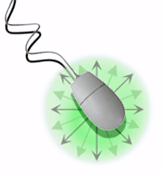 |
 Engineering the Future Engineering the Future
|
 |
 NSF Invests
$10 Million in NSF Invests
$10 Million in
New Engineering Research Centers
The National Science Foundation (NSF) has
invested $10 million to fund the first year of new
Engineering Research Centers (ERCs) in Georgia, Hawaii,
Maryland, South Carolina and Virginia. The five new
centers are pioneering fields such as tissue engineering,
computer assisted surgery, computer modeling and visualization
of industrial materials, power electronics and marine
bioproducts. "As research expands knowledge, the perceived
boundaries between the classic disciplines of engineering
and science are beginning to blur," said Eugene Wong,
NSF assistant director for engineering. "The Engineering
Research Centers not only expand the frontiers of
engineering technology, they prepare the next generation
of engineering leaders."
More...
|
 |

NSF Awards
Minority Graduate Education Grants
The National
Science Foundation (NSF) is awarding eight universities
nearly $2.5-million each to significantly increase
the number of African American, Hispanic and Native
American students receiving doctoral degrees in the
sciences, mathematics and engineering (SME). These
institutions are the first to participate in five-year
cooperative agreements with NSF in its newly established
Minority Graduate Education (MGE) program.
More...
|
 |

Scientists
Propose Layered Model of Earth's Inner Core
Earth's inner
core is not a uniform iron crystal, but is instead
composed of two distinct layers, according to researchers
funded by the National Science Foundation (NSF). Seismologists
Xiaodong Song from Columbia University's Lamont-Doherty
Earth Observatory and Don Helmberger of the California
Institute of Technology used seismic data from earthquakes
to infer that the inner core has two distinct parts:
a spherical lower part surrounded by a thin, uneven
upper layer of different material properties. These
findings are likely to affect the current model of
how the earth, and its magnetic field, formed.
More...
|
 |

Researcher Links Internet Behavior
with Laws of Physics
The Internet
has a reputation as a wild and woolly electronic frontier
where anything goes and no one plays by the rules,
because there are no rules. Yet, underlying patterns
of Internet use are driven by well-structured rules
of social and physical interaction that can be modeled
mathematically, and may even point the way to developing
more user-friendly Web sites and search mechanisms,
according to NSF-funded researcher Bernardo A. Huberman,
a consulting professor of physics at Stanford University
and a Research Fellow at the Xerox Palo Alto Research
Center. Huberman's research indicates that while moving
through a Web site with a mouse seems random, the
behavior actually can be plotted and predicted, conforming
to laws of physics that were derived in the 1920's
on apparent random movements of sub-atomic particles.
More...
|
 |
 
|

